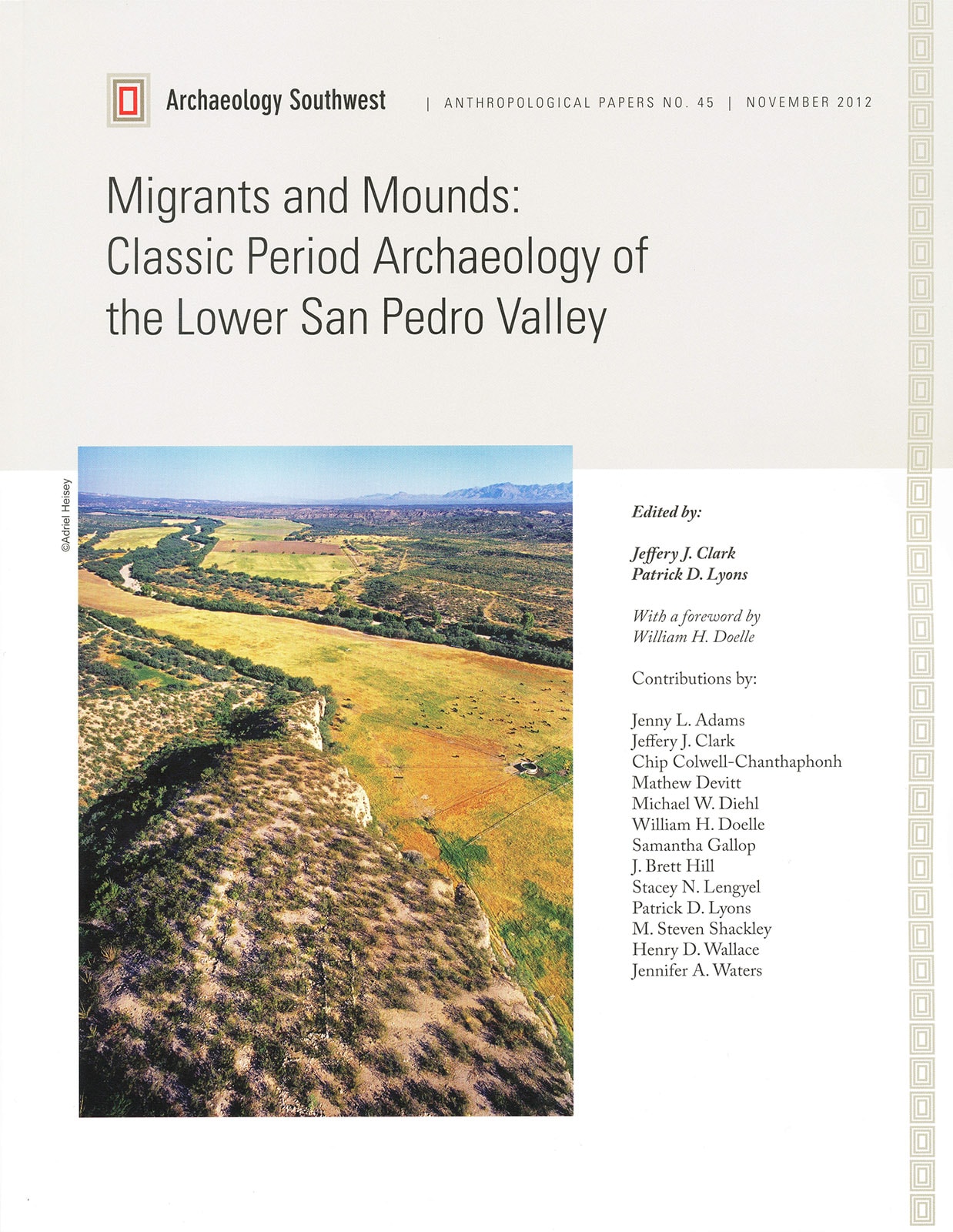Description
Migrants and Mounds: Classic Period Archaeology of the Lower San Pedro Valley (AP45)
The San Pedro Valley is a little off the beaten path, which is one reason why archaeology is generally well preserved there. From Benson north to Winkelman, the valley is served by two-lane roads, and for nearly half of that distance, the roads are unpaved. High mountains to the east and west clearly define the valley, and cottonwoods or dense stands of mesquite reveal places where the river’s waters flow above and below ground. This valley truly is a special place – for visitors and archaeologists alike.
In 1990, 10 volunteers initiated the Center for Desert Archaeology’s Lower San Pedro Survey, which covered 75 miles along the river over the ensuing four-and-a-half years. Volunteer crews did all of that work. Diverse goals – surveying, mapping, training site stewards, visiting landowners, leading tours – motivated subsequent visits. The San Pedro Valley played a formative role in the development of two archaeological institutions, the Amerind Foundation, located along the eastern boundary of the San Pedro watershed, and Archaeology Southwest (formerly the Center for Desert Archaeology).
William Shirley Fulton, Amerind’s founder, conducted the institution’s very first excavations in the 1930s. These excavations drew the new institution into a debate over the nature and extent of the newly defined Mogollon culture, and led to work at the sites of Tres Alamos, north of Benson, and Babocomari Village, west of Fairbank. Building on that work, Charles Di Peso formulated a larger research agenda that used what he called “archaeohistory” to pursue the linkage between early contact populations and the archaeological manifestations of the 1400s. Work at multiple sites around Fairbank in the early 1950s was followed by work at Reeve Ruin and Davis Ranch in the mid-1950s.
Findings at these two sites raised the issue of migration into the valley, and in many ways, the Center for Desert Archaeology’s survey followed the overall goals of the Amerind’s original archaeohistory program. In 1990, migration was not our primary research focus, but as the survey progressed and we assessed the results, migration drew more of our attention. Changes in population size and distribution and the role of migrants in local history were principal questions for the mapping and limited excavation program we initiated in 1999. The results reported in this volume led us to the Safford, Tonto Basin, Phoenix, and Perry Mesa areas, and then on to the upper Gila.
Our work in the San Pedro brought Preservation Archaeology into focus. It is now central to Archaeology Southwest. The San Pedro Valley is where we first engaged our big-picture research questions about precontact regional migration and population collapse in the southern Southwest. Working with dispersed valley communities prompted us to expand our public programs. Looming threats accentuated the need for active site protection in the valley. Today, our site protection program has a full-time staff, and the number of sites under our protection is growing. Six of these are in the San Pedro.
Supplementary materials
Ground Stone Tool Inventory, San Pedro Preservation Project
By Jenny L. Adams
Standardizing Artifact Counts for Intersite Comparisons, San Pedro Preservation Project
By Jeffery J. Clark and J. Brett Hill
Corrugated Wares in Utilitarian Assemblages, Eastern Arizona and New Mexico
By Jeffery J. Clark and Stacey N. Lengyel
Paleobotanical Data: San Pedro Preservation Project Construction and Fuel Remains
By Michael W. Diehl
Paleobotanical Data: San Pedro Preservation Project Food Remains and Macrobotanical Specimens
By Michael W. Diehl
Classic Period Demographic Data, San Pedro Preservation Project
By J. Brett Hill
Sherd Densities from Control Units, San Pedro Preservation Project
By Patrick D. Lyons
Ceramic Ware and Type Counts, by Site and District, San Pedro Preservation Project
By Patrick D. Lyons
Flaked Stone Tool Inventory, San Pedro Preservation Project
By R. Jane Sliva
The Shell and Coral Assemblage, San Pedro Preservation Project
By Arthur W. Vokes
Faunal Data, San Pedro Preservation Project
By Jennifer A. Waters
